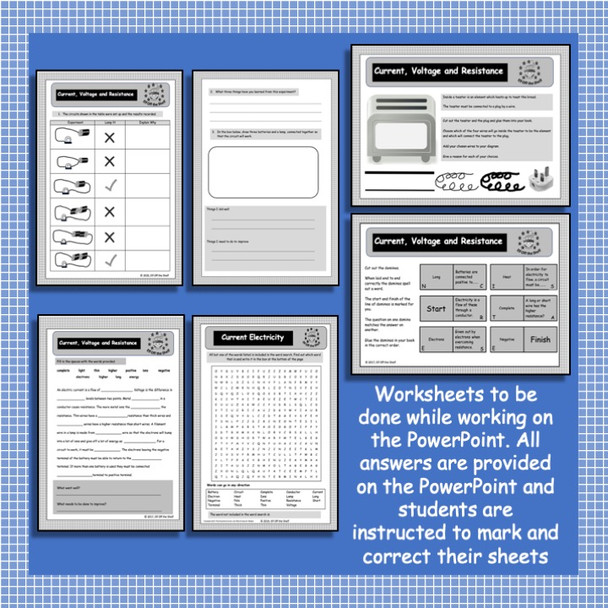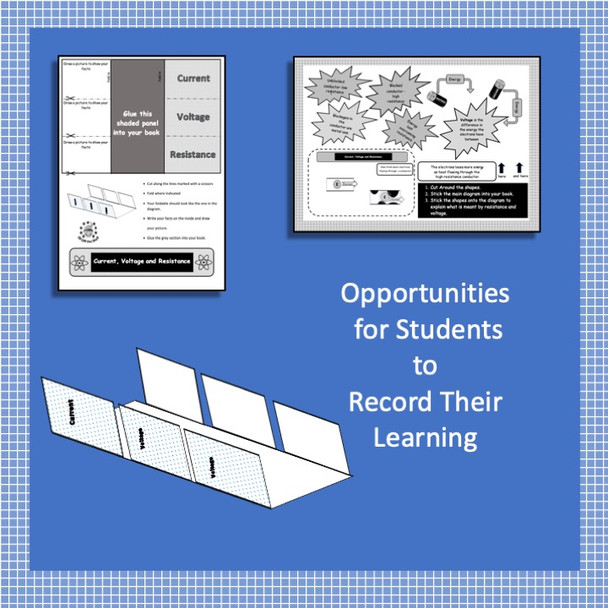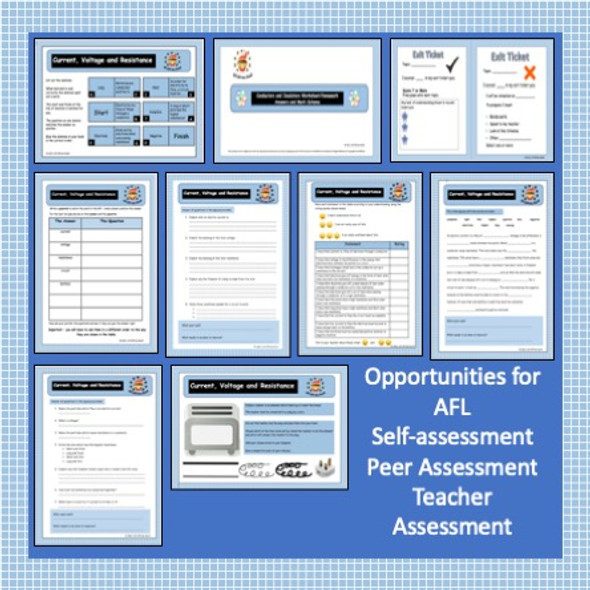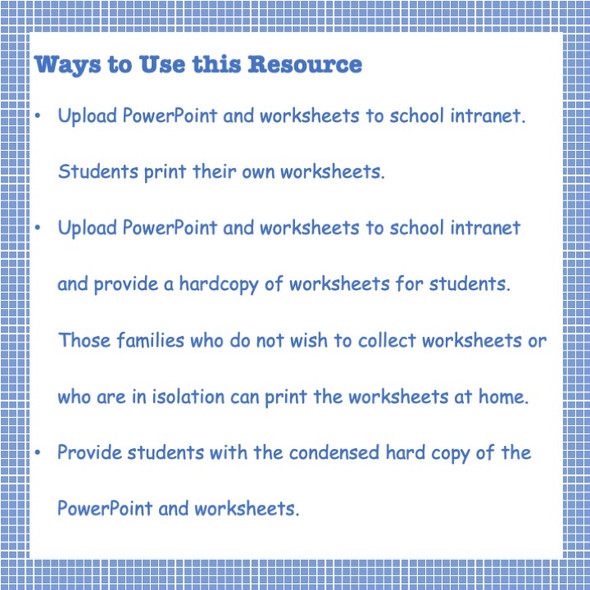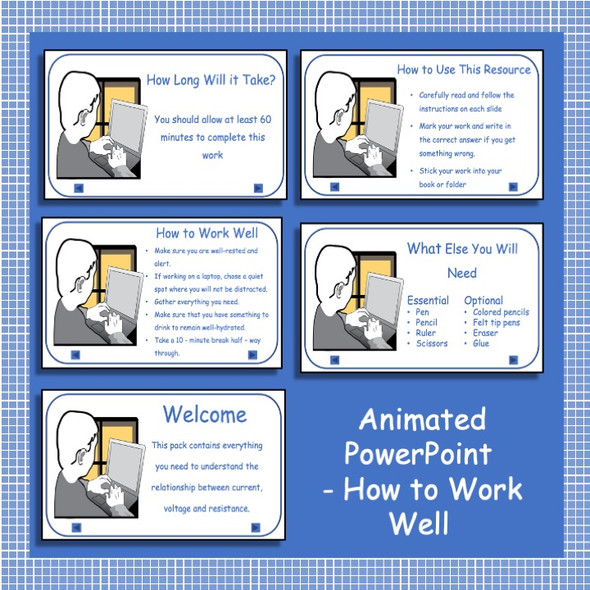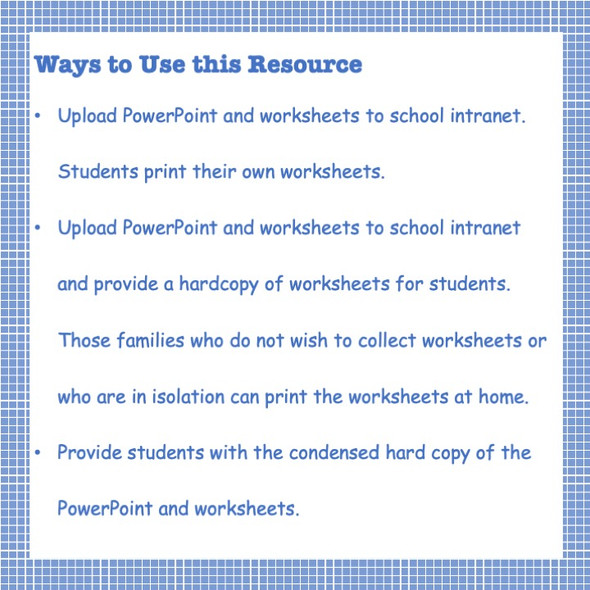Description
This action-packed distance or remote learning package introduces current as a flow of electrons and explains the relationship between current, voltage and resistance using the analogy of a diver using up energy obtained from food and giving off heat as they swim through pipes filled either with water (low resistance) or water and rocks (high resistance). The food as a source of energy is then replaced by the battery, the diver by the electron and the rocks by metal ions. Both scenarios are animated in the PowerPoint. This explanation is then extended to compare the resistance of long, short, thick and thin wires. The practical explores the conditions needed for current to flow in a circuit.
This resource has been designed so that the animated PowerPoint replaces the teacher by providing structure, sequence, knowledge and answers. The worksheets, cut-outs, foldable and progress check provide a familiar medium for students to develop and test their knowledge, continue to develop their literacy skills and use their creativity to organise their learning and assess their progress. There is also a short digital test which can be returned to the teacher.
Objective
- To know that current is a flow of electrons through a conductor when they are given energy or pushed by a voltage from the battery.
- To know and explain how metal ions cause resistance.
- To know and explain the comparative resistance of wires according to length and thickness.
- To explain why electrons lose more heat passing through a high resistance conductor.
- To know the conditions needed for current to flow in a circuit.
Resources
1. An animated PowerPoint which guides the student through the lesson by:
- explaining how to use distance learning effectively;
- explaining how to use this resource;
- explaining current, voltage and resistance and the relationship between them;
- providing the answers to all the worksheets so that the students can mark and correct their work.
2. Two worksheets, two cut-out activities and a word search the answers to which are in the PowerPoint.
3. A foldable and cut-out activity so that students can record and organise their learning.
4. A checklist for students to use to assess their progress.
5. A short digital test which can be returned to the teacher.
6. For those students without internet or a computer or a computer at home a condensed printable copy of the PowerPoint is provided for distribution by school.
Ways to Use this Resource
- Upload PowerPoint and worksheets to school intranet. Students print their own worksheets.
- Upload PowerPoint and worksheets to school intranet and provide a hardcopy of worksheets for students. Those families who do not wish to collect worksheets or who are in isolation can print the worksheets at home.
- Provide students with a hard copy of the condensed PowerPoint and worksheets.
Other distance Learning products
Current, Voltage and Resistance Explained Distance Learning Pack
Conductors and Insulators Explained Distance Learning and Home School for Middle School Age Pupils
Lamps in Series and Parallel Distance Learning for Middle School
Current Electricity - Circuits and Symbols Distance Learning for Middle School Science
More high quality resources available - click the link to Elf Off the Shelf Resources



